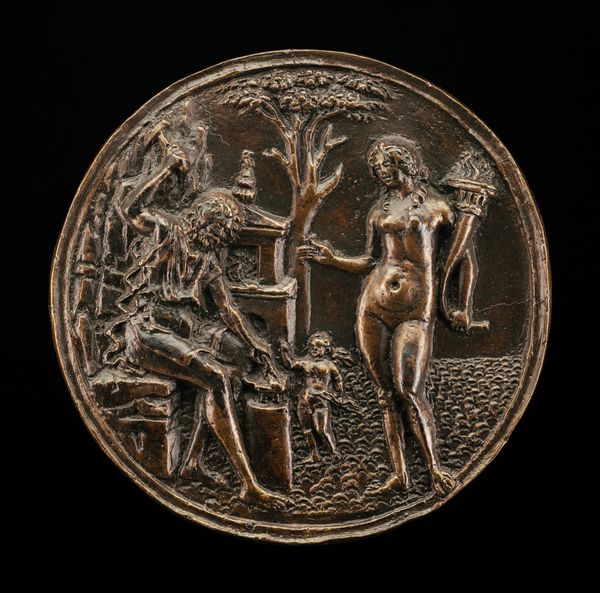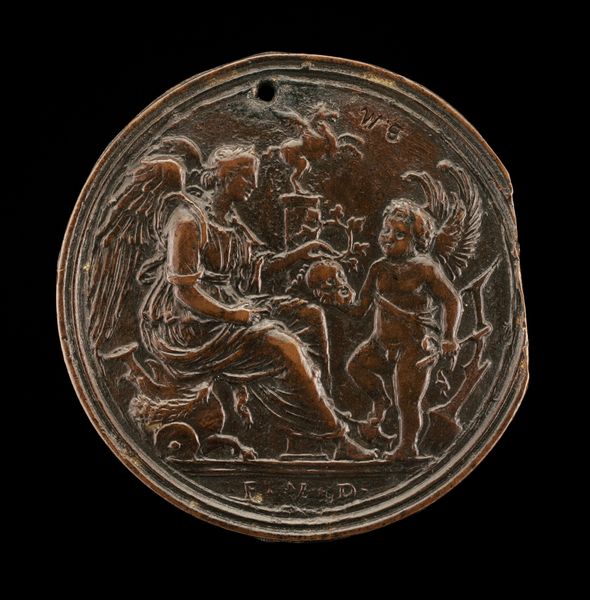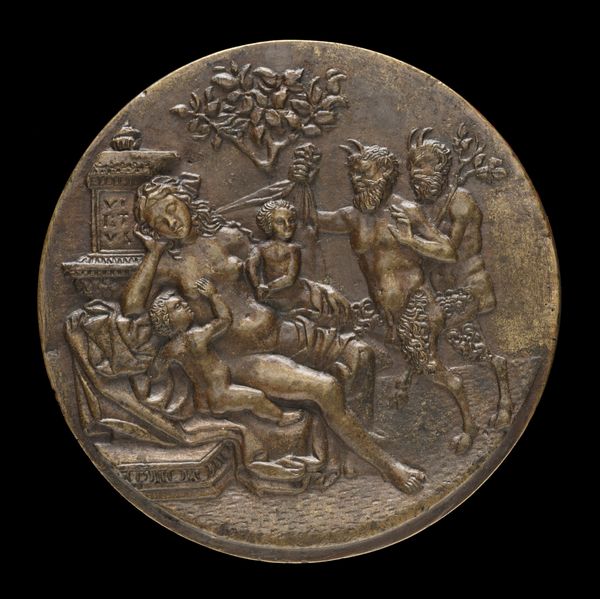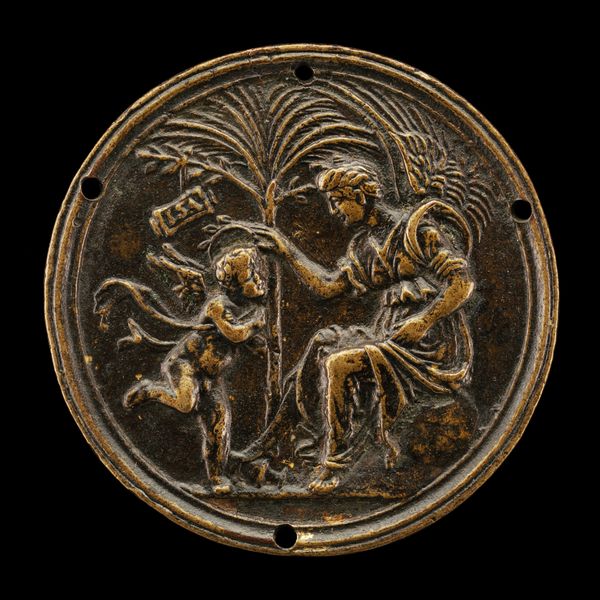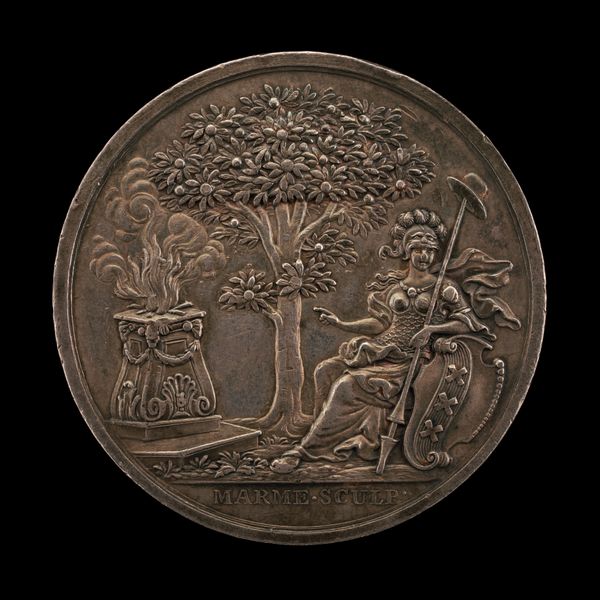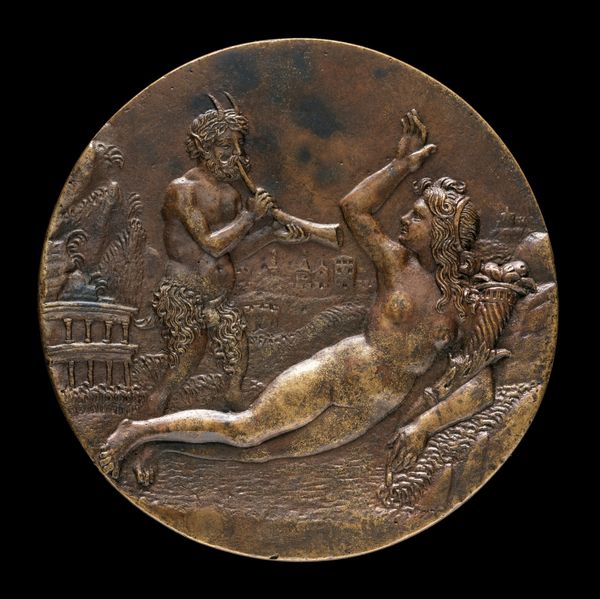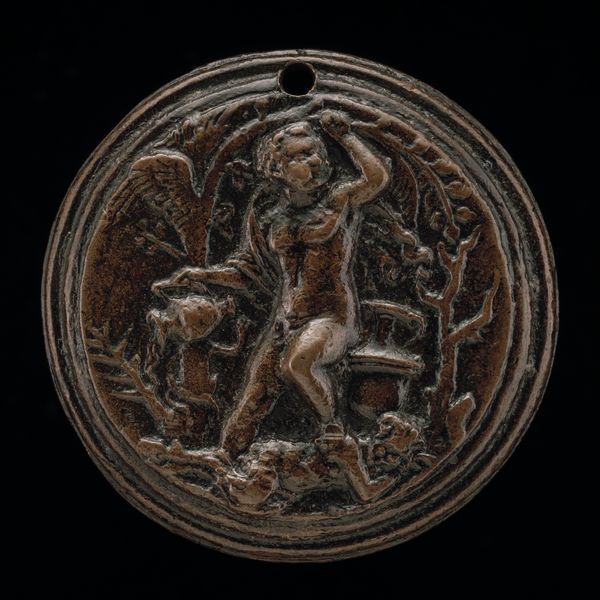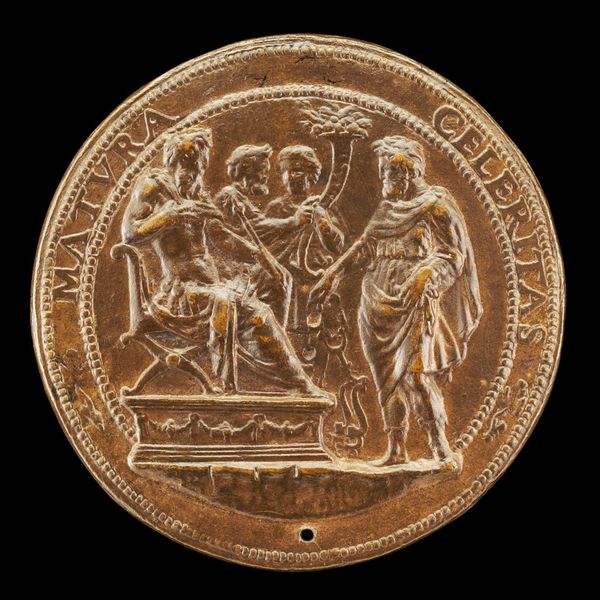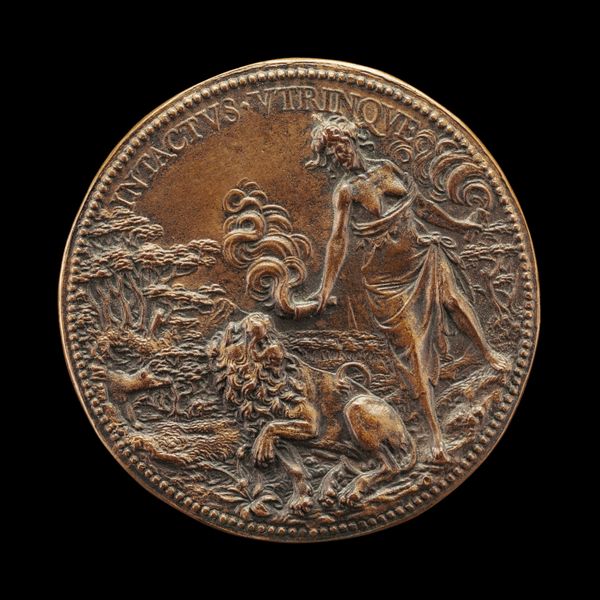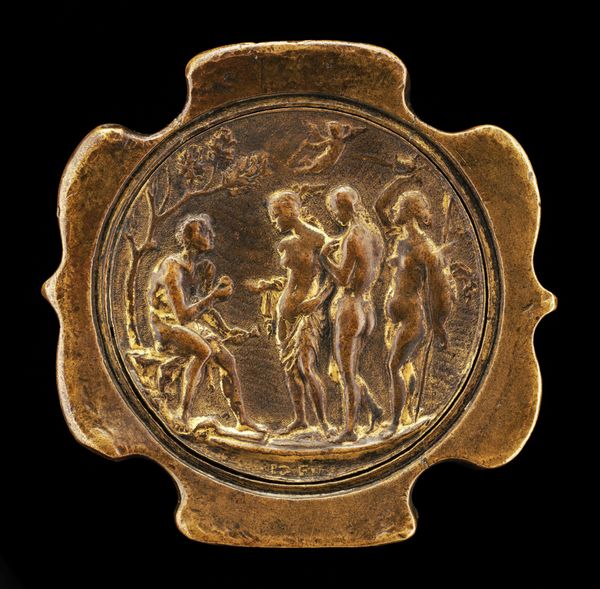
relief, bronze, sculpture
#
allegory
#
stone
#
dark design
#
relief
#
bronze
#
figuration
#
sculpture
#
history-painting
#
italian-renaissance
Dimensions: overall (diameter): 5.65 cm (2 1/4 in.) gross weight: 43.86 gr (0.097 lb.)
Copyright: National Gallery of Art: CC0 1.0
This bronze allegorical scene was crafted by Andrea Briosco, also known as Riccio, sometime before his death in 1532. The circular relief testifies to the Renaissance fascination with classical antiquity, showing a winged figure and cherubic child amidst symbolic foliage. Riccio was a master of bronze, and his virtuosity shines through in the meticulous detailing of the scene. The medal was likely produced using the lost-wax casting method. A wax model would have been carefully carved, then encased in clay and fired. As the wax melted away, molten bronze replaced it, capturing every nuance of the original design. After cooling, the mold would have been broken to reveal the bronze form, which was then refined with chisels and engraving tools. The bronze material itself carries social significance. In the Renaissance, bronze casting was associated with wealth, power, and the revival of classical ideals. Objects like this demanded a mastery of craft traditions, separating makers from other forms of labor. Riccio moves beyond conventional modes of art making, inviting us to consider the intricate dance between concept, process, and material.
Comments
No comments
Be the first to comment and join the conversation on the ultimate creative platform.
